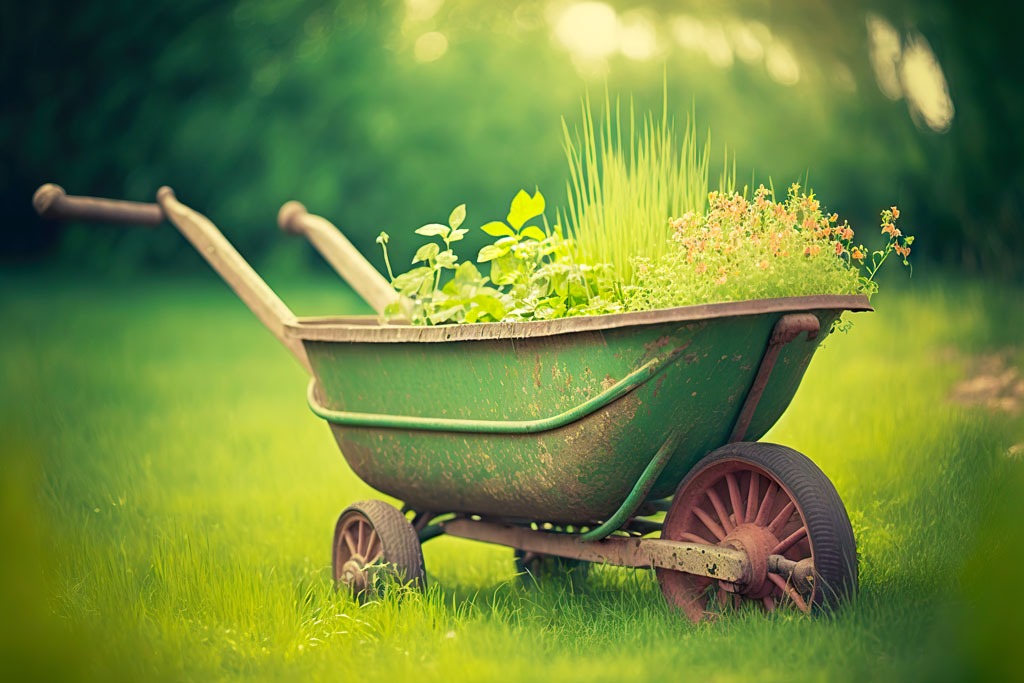Before we have a plan for our garden, we need to gather some facts and answer some questions. The most important one has already been answered. Should you plant a garden? Hopefully, that's a resounding "yes!" So, let’s get started.
First, it is perfectly OK to have several different types of gardens growing at once. For instance: One of our favorites is a salad ingredient garden planted in a wheelbarrow. Utilizing a wheelbarrow for your garden plot gives you the versatility to bring it to the door closest to your kitchen.
Ask yourself what you would like to plant in your garden. Perhaps start with your grocery list and choose the vegetables and fruits you most often purchase. Or, would you like to grow the vegetables that you haven’t tried in a while? Or, what are your grandchildren’s or children’s favorites? (Side note: We have discovered that little and big helpers are more inclined to help if it is their favorite food they are harvesting.)
Now that you have made a list of the vegetables, herbs, and fruits you would like to plant, how are you going to organize them?
ORGANIZING YOUR GARDEN
First, test your soil! Knowing the nutrient base of your soil before you plant is imperative.
Second, what type of sunlight will the plot you have chosen receive? Try this exercise to gather your facts. On a day when you are going to be home, check the sunlight throughout the day. Choose a spot on the ground where you are planning to plant. Each hour during the day, go outside and check to see if your chosen spot is still receiving sunlight. Remember to look up. If there is a dormant tree nearby that has lost its leaves for the winter, it could perhaps cast shadows during the spring and summer.
Next, you need to determine the drainage of the soil. Dig several holes 6 inches deep in the garden area and fill them with water. Step back and watch. Is the ground soaking up the water? Or, is the water standing still? If the water is still sitting in the hole after four hours, you’ll need to adjust for water drainage. Water drainage is imperative to plants to avoid negatives such as root rot.
Now that we have checked soil, sunlight, and water, how would you like to organize your garden? One of your options is to organize by meal. For instance, place your vegetables and herbs that you would use to cook an Italian meal on one side of your garden. Or, as we mentioned earlier, you can place all of your salad ingredients in one spot.
Or, you can use companion gardening. Companion gardening is when you place plants together that help each other out. The classic example is Three Sisters companion gardening. Native Americans would plant beans, corn, and squash together. Beans are great for putting nitrogen into the soil. The corn stalk provides a pole for the beans to grow up and on. Squash shades the ground to regulate temperature and deter weeds. Another object of companion gardening is to plant vegetables and herbs together because one repels the insects that are disastrous to another.
A final suggestion is to have several patchwork gardens. Perhaps your favorite herb prefers a shady spot. Or, like us, you enjoy the beauty of a zucchini flower and would like to have a small section around your home where neighbors can enjoy the blooming yellow as well. As you can see, there is no set one way to organize your garden.
Now that you have a “theme” established for your garden, we have found it useful to draw out a plan. Gentle reminder for when and where you are placing your fruits and vegetables in your garden: Leave wiggle room for the plants that are runners. Last year, we placed cantaloupe, melons, and yellow squash at the corners of our gardens.
Till next time. Keep your souls and soles in your garden!
Remember the True Master Gardener: Jesus said, “I am the vine; my Father is the Gardener.” John 15:1
"In the Garden" is written by father-daughter team Bill and Martelle Luedecke. Contact Martelle at 512-769-3179 or luedeckephotography@gmail.com. Contact Bill at 512-577-1463 or bill@texasland.net.
Read more "In the Garden" columns in the 101 Lawn & Garden Guide.

